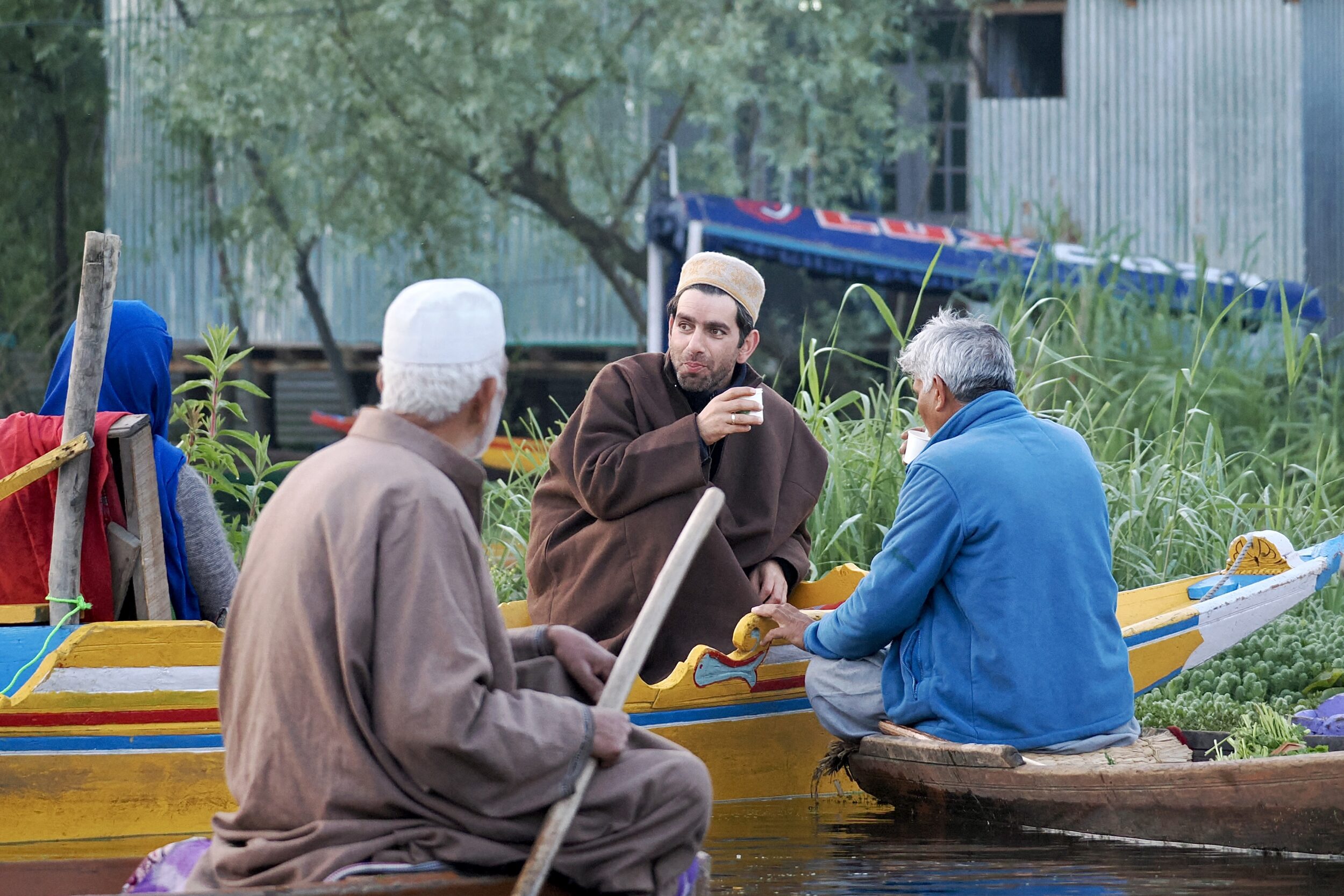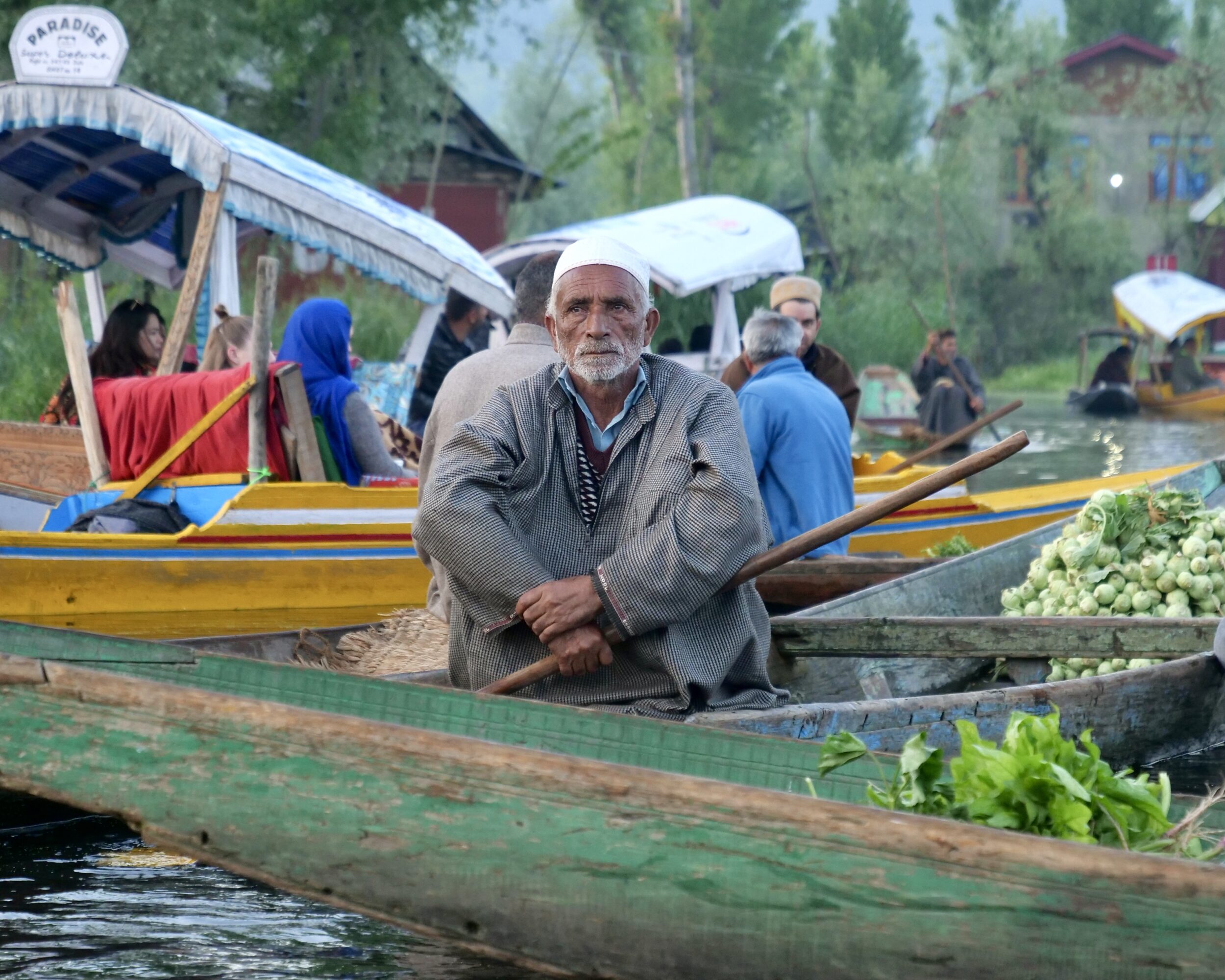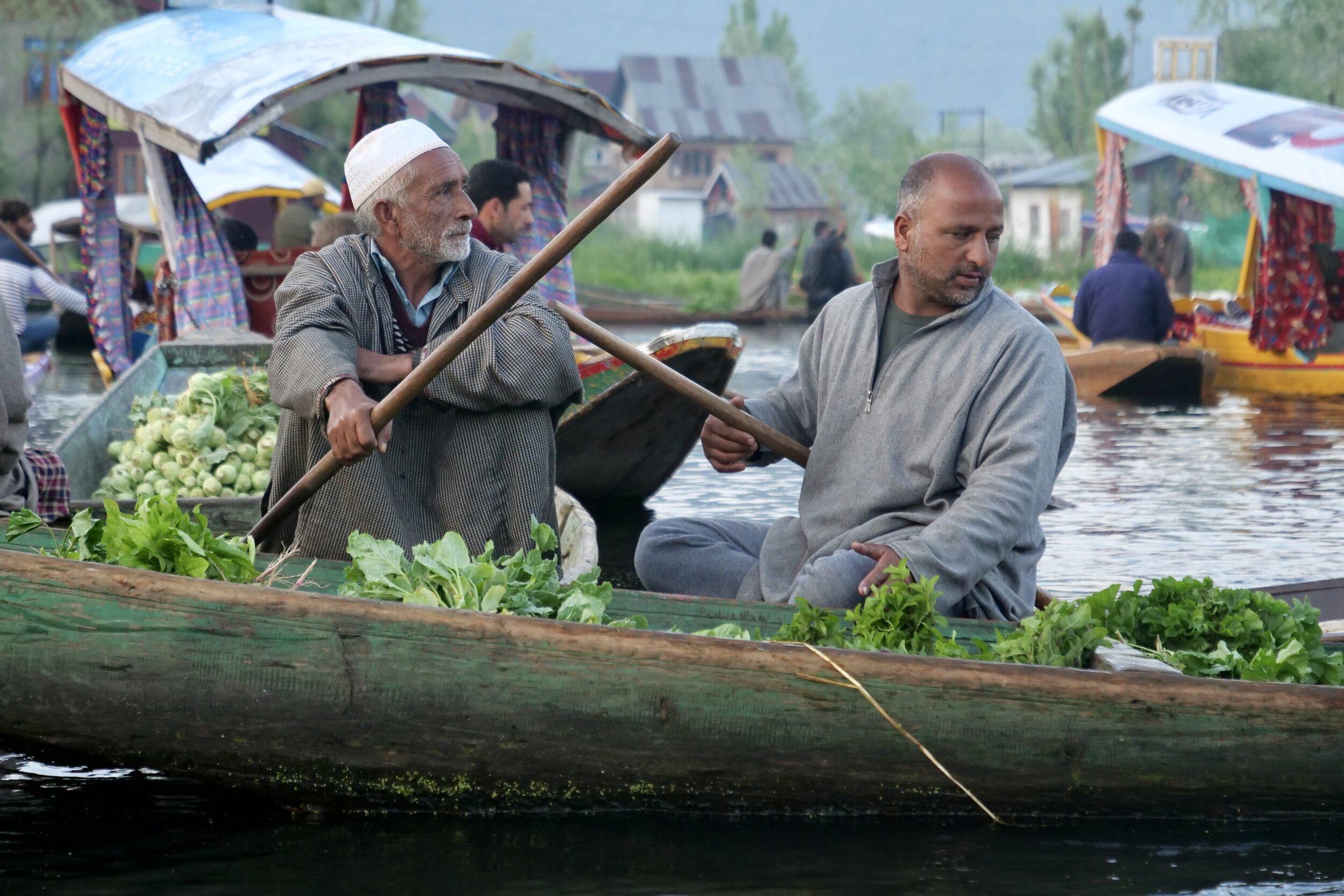#15 in this series having delivered us to Dal Lake’s floating market, this chapter’s photos convey what the market looks like in 2024.
I am reliably informed that, as both “key local vegetable market” and as “tourist attraction”, it has become much-diminished over the last several years.
It is, however, still fascinating.
As evident below, the “tea king of Dal Lake” does brisk business with the local vegetable growers.

Tourist numbers in the vale of Kashmir have bounced back astonishingly quickly, after local tourism’s near-death.
Reportedly, 2024 could prove a record-breaking year.
However, those numbers’ composition is much-changed.
Back when previous records were set, wealthy Westerners” were tourism’s lifeblood.
Now, the overwhelming majority of tourists in Indian-controlled Jammu & Kashmir are Indians.
“In season”, hotels in Srinagar may be overflowing, but Dal Lake’s floating market is not a “magnet” to Indian tourists.
In addition, Dal Lake’s floating gardens – once the provider of a majority of the vegetables consumed in Srinagar – now only a supply a small portion.
That is in large part due to Dal Lake’s polluted, degraded state.
(I suspect that improved transport infrastructure may also have reduced the “relative advantage” formerly enjoyed by Dal Lake’s vegetable growers)

